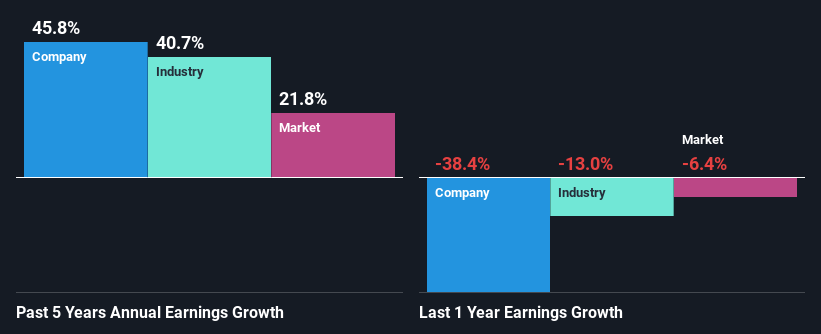Do Its Financials Have Any Role To Play In Driving Tamarack Valley Energy Ltd.'s (TSE:TVE) Stock Up Recently?
Most readers would already be aware that Tamarack Valley Energy's (TSE:TVE) stock increased significantly by 25% over the past three months. We wonder if and what role the company's financials play in that price change as a company's long-term fundamentals usually dictate market outcomes. In this article, we decided to focus on Tamarack Valley Energy's ROE.
ROE or return on equity is a useful tool to assess how effectively a company can generate returns on the investment it received from its shareholders. In simpler terms, it measures the profitability of a company in relation to shareholder's equity.
See our latest analysis for Tamarack Valley Energy
How Is ROE Calculated?
The formula for ROE is:
Return on Equity = Net Profit (from continuing operations) ÷ Shareholders' Equity
So, based on the above formula, the ROE for Tamarack Valley Energy is:
9.5% = CA$203m ÷ CA$2.2b (Based on the trailing twelve months to June 2023).
The 'return' is the profit over the last twelve months. Another way to think of that is that for every CA$1 worth of equity, the company was able to earn CA$0.09 in profit.
What Is The Relationship Between ROE And Earnings Growth?
We have already established that ROE serves as an efficient profit-generating gauge for a company's future earnings. Depending on how much of these profits the company reinvests or "retains", and how effectively it does so, we are then able to assess a company’s earnings growth potential. Assuming everything else remains unchanged, the higher the ROE and profit retention, the higher the growth rate of a company compared to companies that don't necessarily bear these characteristics.
A Side By Side comparison of Tamarack Valley Energy's Earnings Growth And 9.5% ROE
When you first look at it, Tamarack Valley Energy's ROE doesn't look that attractive. Next, when compared to the average industry ROE of 20%, the company's ROE leaves us feeling even less enthusiastic. In spite of this, Tamarack Valley Energy was able to grow its net income considerably, at a rate of 46% in the last five years. So, there might be other aspects that are positively influencing the company's earnings growth. Such as - high earnings retention or an efficient management in place.
Next, on comparing Tamarack Valley Energy's net income growth with the industry, we found that the company's reported growth is similar to the industry average growth rate of 41% over the last few years.
Earnings growth is a huge factor in stock valuation. What investors need to determine next is if the expected earnings growth, or the lack of it, is already built into the share price. This then helps them determine if the stock is placed for a bright or bleak future. Has the market priced in the future outlook for TVE? You can find out in our latest intrinsic value infographic research report.
Is Tamarack Valley Energy Making Efficient Use Of Its Profits?
Tamarack Valley Energy's three-year median payout ratio to shareholders is 12%, which is quite low. This implies that the company is retaining 88% of its profits. So it looks like Tamarack Valley Energy is reinvesting profits heavily to grow its business, which shows in its earnings growth.
While Tamarack Valley Energy has seen growth in its earnings, it only recently started to pay a dividend. It is most likely that the company decided to impress new and existing shareholders with a dividend.
Conclusion
On the whole, we do feel that Tamarack Valley Energy has some positive attributes. Even in spite of the low rate of return, the company has posted impressive earnings growth as a result of reinvesting heavily into its business. While we won't completely dismiss the company, what we would do, is try to ascertain how risky the business is to make a more informed decision around the company. You can see the 5 risks we have identified for Tamarack Valley Energy by visiting our risks dashboard for free on our platform here.
Have feedback on this article? Concerned about the content? Get in touch with us directly. Alternatively, email editorial-team (at) simplywallst.com.
This article by Simply Wall St is general in nature. We provide commentary based on historical data and analyst forecasts only using an unbiased methodology and our articles are not intended to be financial advice. It does not constitute a recommendation to buy or sell any stock, and does not take account of your objectives, or your financial situation. We aim to bring you long-term focused analysis driven by fundamental data. Note that our analysis may not factor in the latest price-sensitive company announcements or qualitative material. Simply Wall St has no position in any stocks mentioned.

